No need to assume. The answer is yes. We are evolved to be most sensitive to the human vocal range after all.
. . .
PeterA: Maybe I focus on vocals because I am highly "evolved."
No need to assume. The answer is yes. We are evolved to be most sensitive to the human vocal range after all.
. . .
PeterA: Maybe I focus on vocals because I am highly "evolved."
Yes, a wall of glass windows and lots of concrete.
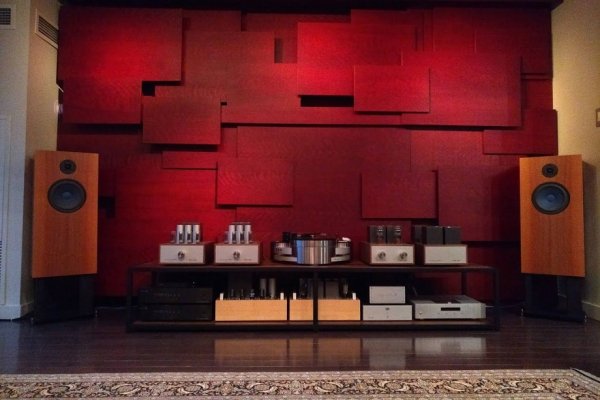
For instance, a soundproofing curtain can be made of two panels of quilted fiberglass and a middle layer made of mass-loaded vinyl (MLV). The thickness may vary and it can weigh from 0.5 to 2.5 pounds per square foot. It’s the mass that handles the critical soundproofing element.
Dimensions: 14’ × 23’ Medium
Ceiling: 8’
Added:
Distributed subwoofer system: AudioKinesis Swarm Subwoofer System
exlibris September 27, 2018 18:17
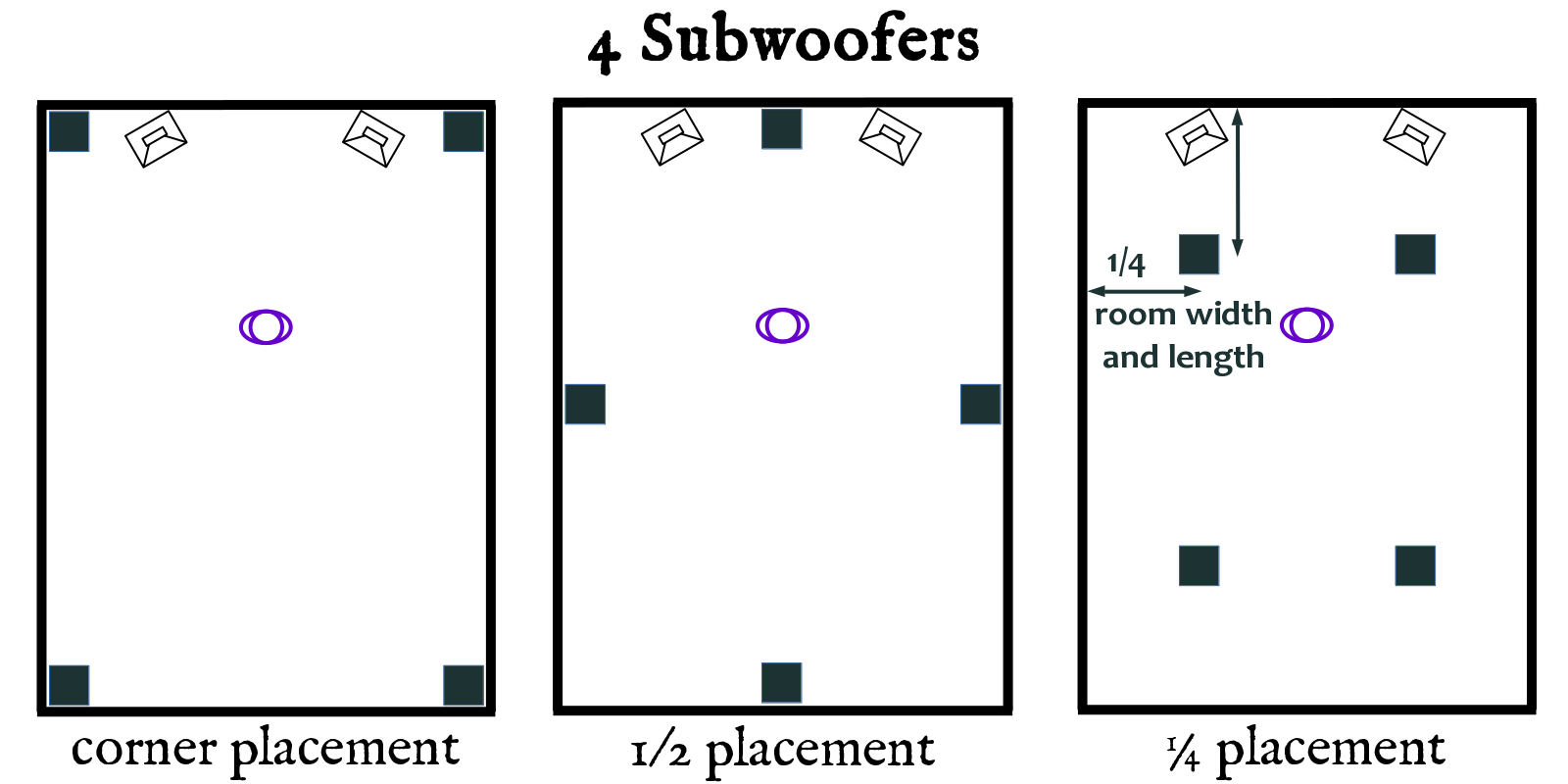
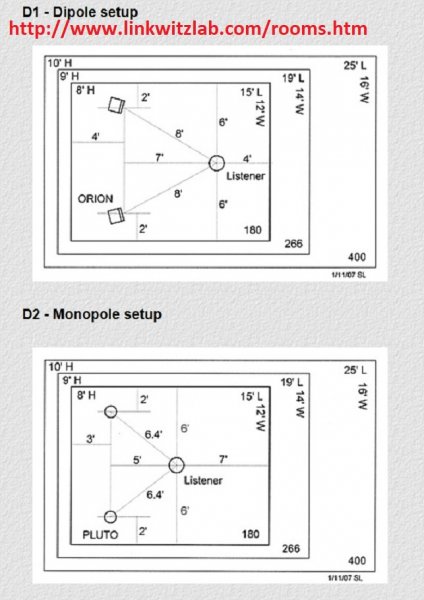
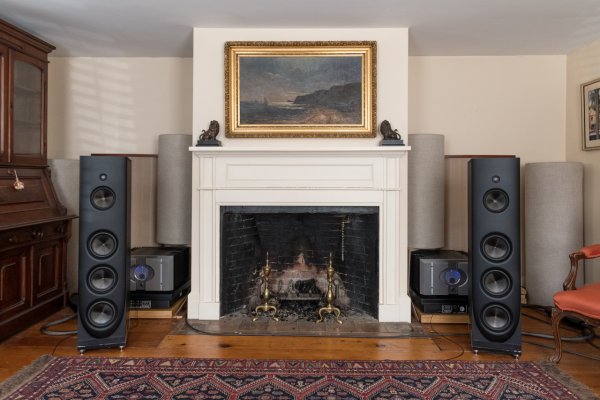
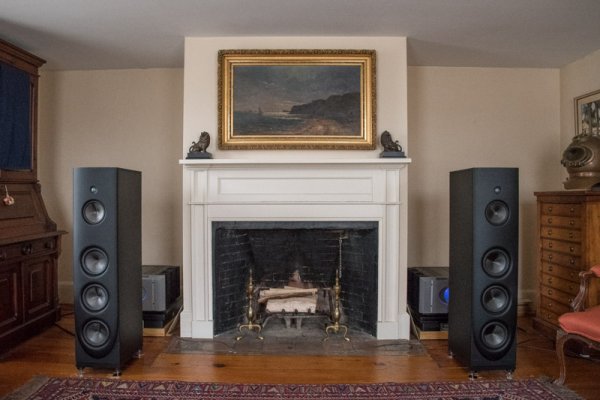
You gotta be kidding me (it's spectacular), this is your system?
https://systems.audiogon.com/systems/729
View attachment 62467
Looks like from the link you have plenty of room treatments.
So it's just the glass, and it's behind your head?
5 of the Best Sound Proof Curtains You Can Buy
Soundproof Curtains, Acoustic Treatment & Myths You Need to Know
https://apathappears.org/soundproof-curtains-acoustic-treatment-myths-you-need-to-know/
https://systems.audiogon.com/systems/729
All I can suggest is moving your speakers away from the corners and out from the front wall because the room boundaries are going to reinforce bass too much - in my opinion. And move them speakers closer together, verify sweetspot by providing a floor plan layout drawn on grid paper with each square equally a foot.
I also like some absorption mixed with diffusion in between the speakers at ear level, cable hung from ceiling holding thinner panel covered with art would do the trick - would hate to affix to that wood. This is to reinforce your phantom center stage, which may be nonexistent at this point.
Are those sliding wood panels hiding a TV? I've see that done before.
Again, your room is all so beautiful, but also breaks far too many acoustic rules.
EDIT:
https://systems.audiogon.com/systems/729
The Swarm didn't fix the main speakers poor location?
Are they hung from the ceiling in a 1/4 room placement pattern?
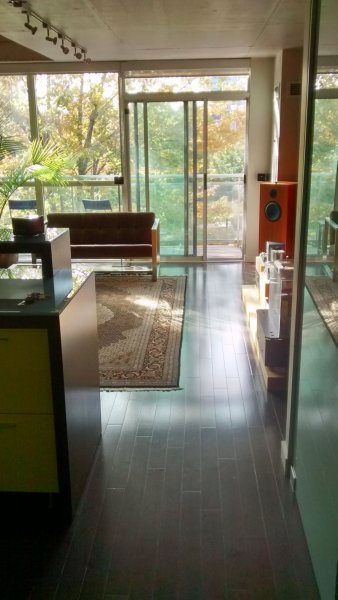
What you don't see there is:
1. a concrete 8' ceiling that goes half way to the listening position and then opens to a 16' ceiling.
2. the left wall is floor-to-ceiling windows.
3. there is no right wall as the room opens to a kitchen
4. the wall behind the listening position is concrete.

1. Some speakers are less prone to room boundaries or intended to be wall mounted.
Have you considered horns or on the wall Martin Logan's?
2. Can you install a floating cloud to maintain the 8-foot ceiling?

3. Just read that toe-in and pulling or pushing one of the front speakers out of aliment with the other flanking speaker can somewhat make up for one sided room openings. Have you tried this?
You are in a pickle for any serious listening, have you considered an addition?
Either a new room for your stereo or new master bedroom and turn the master bedroom into dedicated listening room.
Advantage of the second option is the wife gets something out of it and is more likely to be on board.
The human mind is your best weapon as it is highly adaptive and has the power to make you see what you want to see and hear what you want to hear.I appreciate that we are discussing some general principles about room acoustics, treatments, and dimensions. However, I have found that there are instances where rooms can seem to break the conventional rules. Mine might be one of them. I also think some of this depends on one's preferences. I have traded some definition and what I think of as "hifi" attributes for a more organic, energized, or natural sound.
After reading this thread, I have done some listening experiments. I have a small room, 15' X 16' X 7.5'. Speakers are on the slightly longer wall, with tweeters about 5' out into the room because of a protruding fireplace. Tweeters are 51" in from each side wall, and speakers are pointing straight ahead, zero toe-in. I have wood louvered blinds over the windows and have recently removed all acoustic room treatmens except for a 2' X 2' absorption panel 12" on the wall behind the listening seat. Construction is very heavy plaster/lathe over post and beam construction in a house built in the 1790s.
I listened again with two 12" X 48" ASC absorptive panels at the two first reflection points, determined with a mirror. The panels increase sense of focus very slightly, but it comes at the expense of liveliness and energy in the room. Going back and forth a few times, I hear and appreciate the tradeoffs and now prefer slightly, the more energized acoustic without the panels in the room. The music simply comes alive more. I can live with slightly less definition and focus. If not concentrating and switching back and forth a few times while listening to a variety of music, I probably would not even notice the difference. The room certainly looks better without the panels.
The following photo (taken with the iPhone Pro’s super-wide lens from the floor between the speakers, pointing up) shows my ceiling module array. The inside dimension of the white “box” (between the perimeter lights) is 14+ feet.Ceiling height is typically the shortest dimension in a listening room, profoundly impacting the distribution and density of (undesirable) nodal modes in the bass frequencies. Room treatment should therefore address alleviation of bass buildup; maximum bass pressure typically develops at closest boundaries as well as between parallel surfaces - on the front wall (behind the speakers), as well as on the floor/ceiling (directly above the bass drivers/ports). In my ten-foot ceiling height listening room, I have mounted on a grid of steel beam girders, twenty 2’ x 2’ acoustic modules collectively weighing more than 400 kgs an assortment of diaphragmatic bass absorbers tuned to 30-50Hz (five in a row horizontally placed directly above the speakers), 50-200Hz (five in the next row placed closer to the listening area) and quadratic diffusers (two rows of five, places around the first ceiling reflection point).
On the subject of room nodes (relative to ceiling height), this video from Acoustic Fields explains it well:
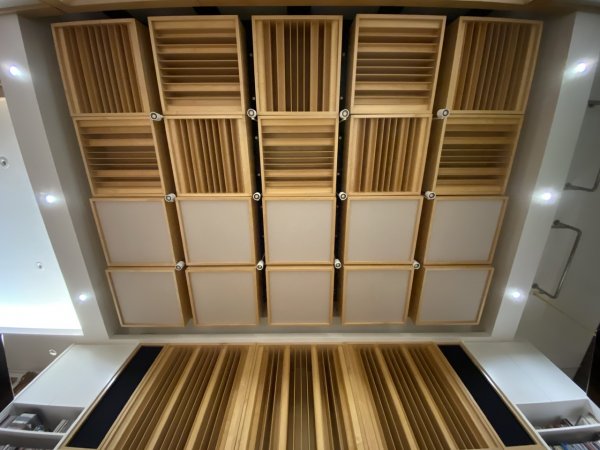
The human mind is your best weapon as it is highly adaptive and has the power to make you see what you want to see and hear what you want to hear.
The power of the illusionists over a crowd is one such example.
In other words, sometimes you get used to a situation because your subconscious mind compensates for it, which is why many of us like our own stereo systems and rooms verses what we experience in a new venue like a friends house or stereo shop.
At least that's my theory of the day.
Peter, I used the dimensions you gave and assumed your ear is about 2' from the rear wall to calculate the time delay of the first reflection from the side wall. It would arrive 5.2ms after the direct sound. You are just outside the 5ms window. It is when that first reflection is less than 5ms that it is really bad. I do know exactly what you are talking about as I have done the same experiments in different rooms/settings. If you can get away without the sidewall damping then the soundstage is bigger and more open sounding and I think most people would prefer this sound. (Toole's book points this out that people actually preferred an untreated sidewall) Your definitely right about the room looking better without the panels.
I used the dimensions you gave and assumed your ear is about 2' from the rear wall to calculate the time delay of the first reflection from the side wall. It would arrive 5.2ms after the direct sound. You are just outside the 5ms window. It is when that first reflection is less than 5ms that it is really bad. I do know exactly what you are talking about as I have done the same experiments in different rooms/settings. If you can get away without the sidewall damping then the soundstage is bigger and more open sounding and I think most people would prefer this sound. (Toole's book points this out that people actually preferred an untreated sidewall).
I have not only considered horns, I have a pair on order! Odeon No. 33.
What you don't see there is....
4. the wall behind the listening position is concrete.
The Swarm helped a lot. It's one of the best things I've ever purchased in the hobby.
I have a rug on the wall behind my head at the listening position but I'm not sure it does much.If that concrete wall is less than about 5 feet behind your head, then the first reflections off that wall arrive less than 10 milliseconds behind the first-arrival sound. And even if you have a bit more distance than that, it still might make sense to address those first reflections, as they (and other first reflections) contribute to "small room signature", which is something you do not want to have super-imposed atop the spatial cues on the recording.
You might consider an angled reflector or two on the wall behind your head. The idea is to bounce the sound that comes straight from each speaker in a direction that misses the back of your head. It's okay if later reflections arrive from behind; we just want to re-direct the first ones from each speaker if they would otherwise arrive earlier than about 10 milliseconds behind the first-arrival sound.
Thank you sir!!
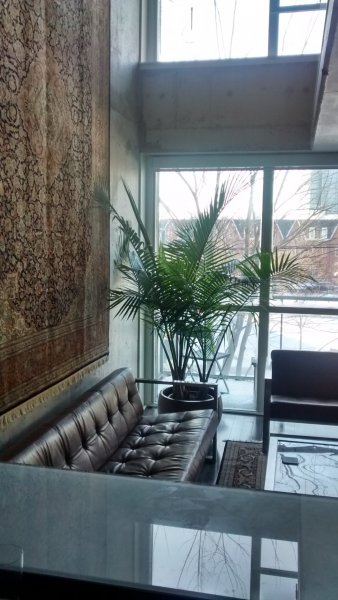
I think the Odeons will be good if I keep the speakers in the same location as my old ones but if I decide to go with a near-field setup I need to know if the drivers will integrate at a very short distance. I've put the question to some Odeon experts on this forum.I think this is the right direction to go in for your situation, and the Odeons seem to me like very intelligent and competent designs.
I'm told that the old lathe and plaster has good acoustical damping qualities, which probably helps with bass absorption in your room. I can't tell for sure from the picture but it looks like you had the high frequency reflectors pointed away from you when you had the TubeTraps installed. You don't notice any change in bass quality with the TubeTraps removed?After reading this thread, I have done some listening experiments. I have a small room, 15' X 16' X 7.5'. Speakers are on the slightly longer wall, with tweeters about 5' out into the room because of a protruding fireplace. Tweeters are 51" in from each side wall, and speakers are pointing straight ahead, zero toe-in. I have wood louvered blinds over the windows and have recently removed all acoustic room treatmens except for a 2' X 2' absorption panel 12" on the wall behind the listening seat. Construction is very heavy plaster/lathe over post and beam construction in a house built in the 1790s.
I listened again with two 12" X 48" ASC absorptive panels at the two first reflection points, determined with a mirror. The panels increase sense of focus very slightly, but it comes at the expense of liveliness and energy in the room. Going back and forth a few times, I hear and appreciate the tradeoffs and now prefer slightly, the more energized acoustic without the panels in the room. The music simply comes alive more. I can live with slightly less definition and focus. If not concentrating and switching back and forth a few times while listening to a variety of music, I probably would not even notice the difference. The room certainly looks better without the panels.
The other experiment I did was listening with the door open. The door is located in the rear right corner when facing the speakers. Again, the sound is very similar both ways, but the room is slightly more energized with the door closed and the music is less loud in the rest of the small house which is better for my wife in the evenings.
The room is symmetrical along the listening axis and openings are shut. However, the room certainly leaks because it is so old. It is not what I would describe as "sealed", like the Magico listening room I heard during a tour of those facilities. The door does not fit tightly, there are gaps in the floor. There is the open fireplace which has a chimney top damper.
Given the small dimensions and reflections and speaker position, there are a lot of reflections, but the music sounds very natural to me, and it is very clean, clear and dynamic. Images can be localized quite easily, and there is lots of layering and distinct recording venue information that comes across. These last few attributes were difficult to achieve or realize because of the reflective nature of the space without all of the former room treatments. It took a long time to find the proper speaker locations, much more so than when the speakers were toed-in.
I appreciate that we are discussing some general principles about room acoustics, treatments, and dimensions. However, I have found that there are instances where rooms can seem to break the conventional rules. Mine might be one of them. I also think some of this depends on one's preferences. I have traded some definition and what I think of as "hifi" attributes for a more organic, energized, or natural sound.
I think I hear slightly less direct sound, and slightly more reflected sound, than some others might prefer. It is certainly not a sound for everyone as some visitors have remarked, but I thought I would share the specifics of my room to give hope to those with small multi-purpose rooms with low ceilings in which lots of acoustic treatments may not be wanted for aesthetic reasons. I can say that I have never felt more engaged by the music in this challenged room.
Before:
View attachment 62468
After:
View attachment 62469
The human mind is your best weapon as it is highly adaptive and has the power to make you see what you want to see and hear what you want to hear.
The power of the illusionists over a crowd is one such example.
In other words, sometimes you get used to a situation because your subconscious mind compensates for it, which is why many of us like our own stereo systems and rooms verses what we experience in a new venue like a friends house or stereo shop.
At least that's my theory of the day.
I'm told that the old lathe and plaster has good acoustical damping qualities, which probably helps with bass absorption in your room. I can't tell for sure from the picture but it looks like you had the high frequency reflectors pointed away from you when you had the TubeTraps installed. You don't notice any change in bass quality with the TubeTraps removed?
Having heard Peter's system with the new setting I can confirm that it works. On the other hand, in my own room I need extensive treatment (mostly ASC, with an Acoustics First panel thrown in) for it to work. I suppose guests would run out my room screaming if they would hear it with no acoustic treatment. Hey, even I would run out of my own room screaming.
It all depends on the room. There cannot be hard dogmas about this. My ceiling, for example, needed ASC diffusers, and I can still hear traces of a metallic 'zing' echo upon hand clapping, an echo that had been pretty bad before installing the diffusers. When I do the hand clapping test in Peter's room at the ceiling, it sounds completely benign.
And in my own room, the acoustic treatment does not subtract from liveliness of the sound.
| Steve Williams Site Founder | Site Owner | Administrator | Ron Resnick Site Owner | Administrator | Julian (The Fixer) Website Build | Marketing Managersing |

